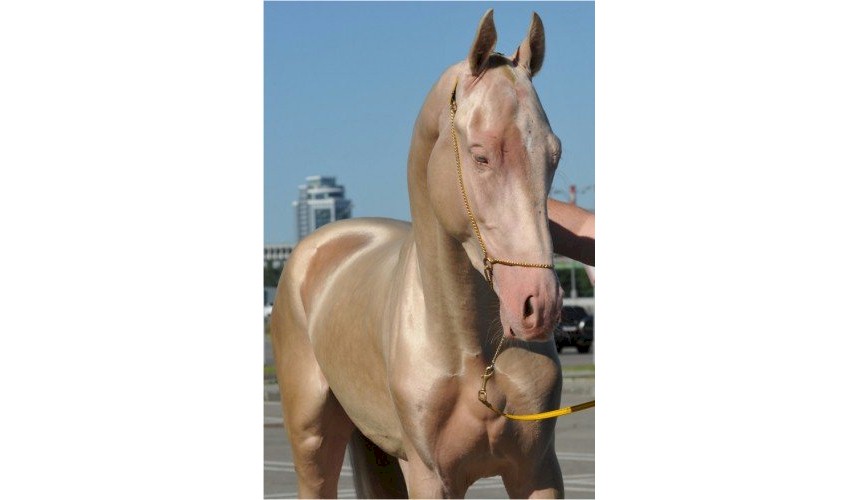Akhal-Teke horses originated from
Turkmenistan and are best known for their intelligence, speed and endurance.
The Akhal-Teke typically stands
between 14.2 and 16 hands (58 and 64 inches, 147 and 163 cm) and there are currently
about 6,600 Akhal-Tekes in the world, found primarily in Turkmenistan and Russia,
with some also located in Europe and North America.
The Akhal-Teke bloodline dates
back thousands of years in Turkmenistan when selectively bred Akhal-Teke were used
for raids and fights for the Russian Empire.
The Akhal-Teke breed has influenced
many other breeds, including several Russian breeds. There has been extensive crossbreeding
with the Thoroughbred to create a fast, long-distance racehorse and as a result
all Akhal-Tekes are thought to have Thoroughbred ancestors. The Russians printed
the first stud book that included the Akhal-Teke in 1941 along with 700 other horse
breeds.
Few breeds of horses have as wide
a diversity of color as the Akhal-Teke. They can be grey, black, dapple, white,
crème, chestnut, bay, buckskin, or palomino color sometimes with a blue or purple
sheen.
They often have
a distinctive
metallic sheen. This color is so special that it has its own name, voronaya, in
Russian and is the result of the “cream gene” a dilution gene that produces a perlino
and cremello color.
Many Akhal-Teke’s have a special
glow to their coat. This is caused by the structure of the hair; the opaque core
is reduced in size and in some areas may be absent altogether. The transparent part
of the hair (the medulla) takes up this space, and acts like a light-pipe, bending
light through one side of the hair and refracting it out the other side, often with
a golden cast or metallic sheen.
Akhal-Teke’s also commonly have
blue eyes. Some even have a “marbled” eye color which can be partially blue. The
effect is quite stunning.
The breed suffered greatly when
the Soviet Union required horses to be slaughtered for meat, even though local Turkmen
refused to eat them. At one point only 1,250 horses remained and export from the
Soviet Union was banned. The government of Turkmenistan now uses the horses as diplomatic
presents as well as auctioning a few to raise money for improved horse breeding
programs.

